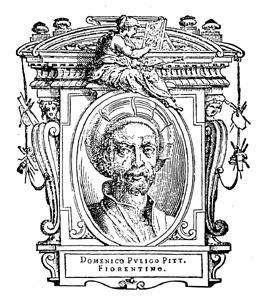Related Research Articles

Impressionism is a 19th-century art movement characterized by relatively small, thin, yet visible brush strokes, open composition, emphasis on accurate depiction of light in its changing qualities, ordinary subject matter, unusual visual angles, and inclusion of movement as a crucial element of human perception and experience. Impressionism originated with a group of Paris-based artists whose independent exhibitions brought them to prominence during the 1870s and 1880s.

The Pre-Raphaelite Brotherhood was a group of English painters, poets, and art critics, founded in 1848 by William Holman Hunt, John Everett Millais, Dante Gabriel Rossetti, William Michael Rossetti, James Collinson, Frederic George Stephens and Thomas Woolner who formed a seven-member "Brotherhood" modelled in part on the Nazarene movement. The Brotherhood was only ever a loose association and their principles were shared by other artists of the time, including Ford Madox Brown, Arthur Hughes and Marie Spartali Stillman. Later followers of the principles of the Brotherhood included Edward Burne-Jones, William Morris and John William Waterhouse.

Futurism was an artistic and social movement that originated in Italy in the early 20th century and to a lesser extent in other countries. It emphasized dynamism, speed, technology, youth, violence, and objects such as the car, the airplane, and the industrial city. Its key figures included the Italians Filippo Tommaso Marinetti, Umberto Boccioni, Carlo Carrà, Fortunato Depero, Gino Severini, Giacomo Balla, and Luigi Russolo. Italian Futurism glorified modernity and according to its doctrine, aimed to liberate Italy from the weight of its past. Important Futurist works included Marinetti's 1909 Manifesto of Futurism, Boccioni's 1913 sculpture Unique Forms of Continuity in Space, Balla's 1913–1914 painting Abstract Speed + Sound, and Russolo's The Art of Noises (1913).

In art history, "Old Master" refers to any painter of skill who worked in Europe before about 1800, or a painting by such an artist. An "old master print" is an original print made by an artist in the same period. The term "old master drawing" is used in the same way.

Ridolfo di Domenico Bigordi, better known as Ridolfo Ghirlandaio was an Italian Renaissance painter active mainly in Florence. He was the son of Domenico Ghirlandaio.

Domenico Puligo (1492–1527) was an Italian painter of the Renaissance, active in Florence. His real name was Domenico di Bartolomeo Ubaldini.

Cecco Bravo was an Italian painter of the Florentine Baroque school. His true name is Francesco Montelatici.

Santa Maria Maddalena dei Pazzi is a Renaissance-style Roman Catholic church and a former convent located in Borgo Pinti in central Florence.
The decade of the 1490s in art involved some significant events.
Domenico Beceri was an Italian painter active in the Renaissance period, mainly in his hometown of Florence. He was a pupil of Domenico Puligo.

The Lives of the Most Excellent Painters, Sculptors, and Architects, often simply known as The Lives, is a series of artist biographies written by 16th-century Italian painter and architect Giorgio Vasari, which is considered "perhaps the most famous, and even today the most-read work of the older literature of art", "some of the Italian Renaissance's most influential writing on art", and "the first important book on art history".
Bartolomeodi Zanobi Ghetti was a Florentine Renaissance painter who has only recently emerged from obscurity as a result of art historical research.

Firle Place is a Manor house in Firle, Sussex, United Kingdom. The Gage family have owned the land at Firle since acquiring it from the Levett family in the 15th century. The manor house was first built in the late 15th century by Sir John Gage, who made Firle Place his principal home. He held many high offices, including Constable of the Tower and was an executor of Henry VIII's will.

École des Beaux-Arts refers to a number of influential art schools in France. The term is associated with the Beaux-Arts style in architecture and city planning that thrived in France and other countries during the late nineteenth century and the first quarter of the twentieth century.

Antwerp is a city in Belgium and the capital of Antwerp Province in the Flemish Region. With a population of 520,504, it is the most populous city center in Belgium, and with a metropolitan population of around 1,200,000 people; it is the second-largest metropolitan region after Brussels.
Puligo is a surname. Notable people with the surname include:

Portrait of a Young Man in Black is an oil on panel painting by Rosso Fiorentino, executed c. 1520, now in the Uffizi in Florence. Its present attribution was assigned by Antonio Natali, director of the Uffizi, replacing a previous attribution to Domenico Puligo.

Woman with a Basket of Spindles is an oil on panel painting, executed c. 1514–1515, now in the Uffizi in Florence. It is attributed to Pontormo or Andrea del Sarto. The work arrived in the Palazzo Pitti's gallery in 1773, as recorded in a note on the reverse, and in 1784 it was hanging in the Sala dell'Ermafrodito. It was last restored in 1996.
References
- Bryan, Michael (1889). Walter Armstrong; Robert Edmund Graves (eds.). Dictionary of Painters and Engravers, Biographical and Critical. Vol. II L-Z. London: George Bell and Sons. p. 329.